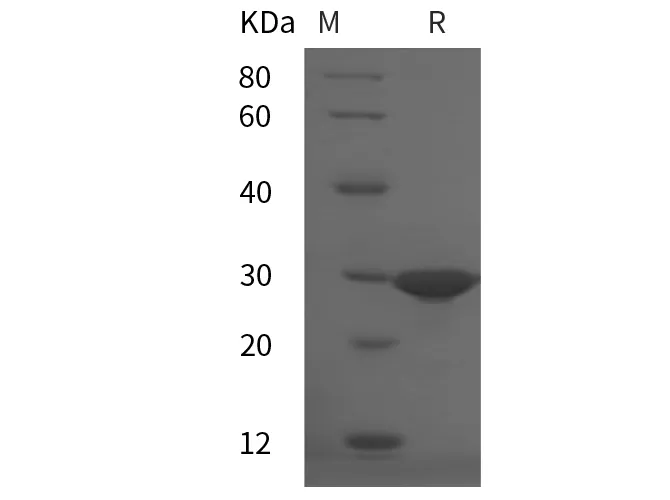Recombinant Human HMGB1 protein (His tag)
CAT:
763-PDMH100141-01
Size:
100 µg
Price:
Ask
- Availability: 24/48H Stock Items & 2 to 6 Weeks non Stock Items.
- Dry Ice Shipment: No




Recombinant Human HMGB1 protein (His tag)
- Background: High-mobility group box 1 protein (HMGB1), also known as HMG-1 or amphoterin previously, is a member of the HMGB family consisting of three members, HMGB1, HMGB2 and HMGB3. HMGB1 is a DNA-binding nuclear protein, released actively following cytokine stimulation as well as passively during cell death. It is the prototypic damage-associated molecular pattern (DAMP) molecule and has been implicated in several inflammatory disorders. HMGB1 signals via the receptor for advanced glycation end-product (RAGE) and members of the toll-like receptor (TLR) family. The most prominent HMGB1 protein and mRNA expression arthritis is present in pannus regions, where synovial tissue invades articular cartilage and bone. HMGB1 promotes the activity of proteolytic enzymes, and osteoclasts need HMGB1 for functional maturation. As a non-histone nuclear protein, HMGB1 has a dual function. Inside the cell, HMGB1 binds DNA, regulating transcription and determining chromosomal architecture. Outside the cell, HMGB1 can serve as an alarmin to activate the innate system and mediate a wide range of physiological and pathological responses. Extracellular HMGB1 represents an optimal ",necrotic marker", selected by the innate immune system to recognize tissue damage and initiate reparative responses. However, extracellular HMGB1 also acts as a potent pro-inflammatory cytokine that contributes to the pathogenesis of diverse inflammatory and infectious disorders.
- Abbreviation: HMGB1
- Synonyms: HMG-1, HMG1, HMGB1, High Mobility Group Protein 1, High Mobility Group Protein B1
- CAS Number: 9000-83-3
- UniProt: P09429
- Accession Number: P09429
- Host: HEK293 Cells
- Origin Species: Human
- Tag: C-His
- Sequence: Met1-Glu215
- Field of Research: epigenetics and nuclear signal
- Purity: > 95% as determined by reducing SDS-PAGE.
- Bioactivity: Not validated for activity
- Reconstitution: It is recommended that sterile water be added to the vial to prepare a stock solution of 0.5 mg/mL. Concentration is measured by UV-Vis.
- Molecular Weight: 30 kDa
- Shipping Conditions: This product is provided as lyophilized powder which is shipped with ice packs.
- Storage Conditions: Generally, lyophilized proteins are stable for up to 12 months when stored at -20 to -80°C. Reconstituted protein solution can be stored at 4-8°C for 2-7 days. Aliquots of reconstituted samples are stable at < -20°C for 3 months.
